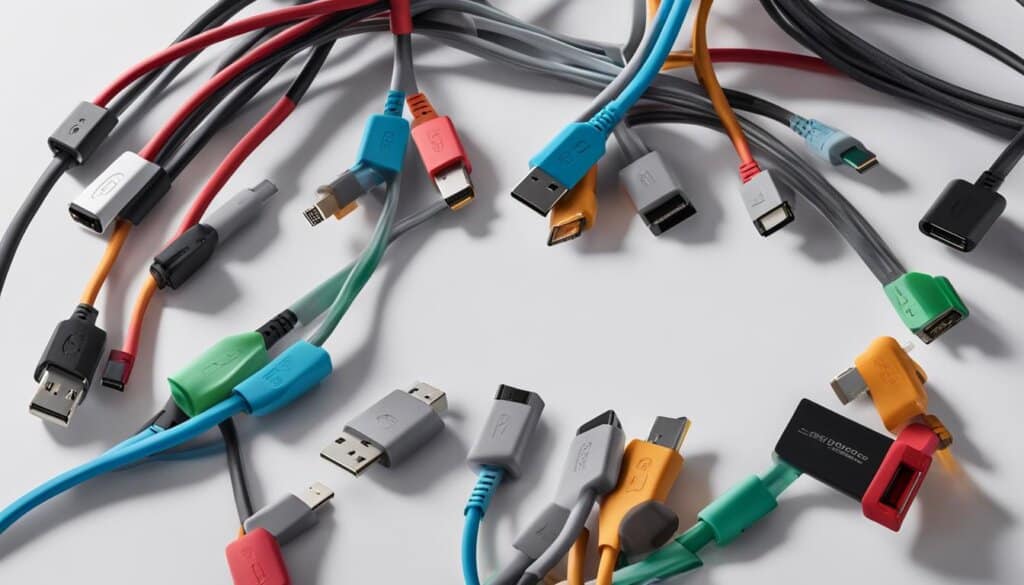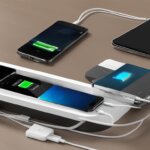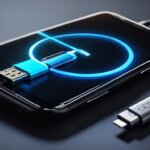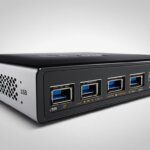Table of Contents
A USB-C charger is a modern solution for charging and data transfer. It is a small, reversible, and versatile port that offers numerous advantages over traditional USB ports.
USB-C chargers are designed to provide faster charging times and support USB Power Delivery technology, allowing for high-speed charging up to 240 watts. This makes them an excellent choice for quickly powering up laptops, smartphones, and tablets.
Moreover, USB-C chargers are not just limited to charging devices. They also enable seamless data transfer between devices, making it easier to transfer files and sync data quickly and efficiently.
With its functionalities and advancements, the USB-C charger has become an essential component in today’s tech-savvy world. Its ability to provide high-speed charging and fast data transfer makes it a reliable and convenient solution for all your charging and connectivity needs.
USB-C Charging: The Benefits and How It Works
USB-C charging revolutionizes the way we power our devices, offering a range of benefits and enhanced functionalities compared to traditional USB charging. With USB-C, you can enjoy faster charging speeds, improved power delivery, and seamless data transfer.
USB-C cables are designed to transmit both power and data, making them incredibly versatile. By supporting more power, USB-C charging offers faster charging times compared to older USB models. This means you can spend less time waiting for your devices to charge and more time using them.
One of the most significant advantages of USB-C charging is its support for USB Power Delivery technology. USB-C ports equipped with Power Delivery have the capability to provide high wattage, allowing for fast charging even when your device is in use. This feature is particularly beneficial for power-hungry devices such as laptops and tablets, enabling you to juice up your device while simultaneously working or using power-intensive applications.
USB-C chargers also offer the convenience of simultaneous data transfer and charging. With USB-C, you can connect your device to a computer or other compatible devices and transfer files while still replenishing its battery. This removes the need for separate cables for charging and data transfer, streamlining the charging process and making it more efficient.
Moreover, USB-C chargers are not limited to charging alone. They also support video output, allowing you to connect your device to external displays, monitors, and projectors with an HDMI or VGA adapter. This feature is particularly useful for presentations, conferences, or simply enjoying your favorite multimedia content on a larger screen.
In addition, USB-C chargers can power other devices besides laptops and smartphones. They have the ability to charge devices such as monitors, external hard drives, and even certain appliances, making them a versatile solution for various power requirements.
| Benefits of USB-C Charging | How it Works |
|---|---|
| Faster charging times | USB-C cables transmit both power and data, supporting high-speed charging |
| Power Delivery | USB-C ports support USB Power Delivery, enabling fast charging even when devices are in use |
| Simultaneous data transfer | USB-C chargers allow for concurrent data transfer and charging, eliminating the need for separate cables |
| Video output support | USB-C chargers can connect devices to external displays and monitors for enhanced visual experiences |
| Powering other devices | USB-C chargers can power a variety of devices, expanding their usability beyond regular devices |
Understanding USB-C Cables and Connectors
USB-C cables and connectors come in various types, each with unique features and specifications. It’s essential to understand the different options available to choose the right cable for your specific needs.
USB-C to USB-C Cables
A USB-C to USB-C cable is the most common type used for charging and data transfer. These cables support fast charging and USB Power Delivery, allowing for quick and efficient charging of devices. With USB-C to USB-C cables, you can also transfer data at high speeds between devices that have USB-C ports.
USB-C to USB-A Cables
If you have older devices that do not have a USB-C port, USB-C to USB-A cables can come in handy. These cables allow you to connect your USB-C device to a standard USB-A port for charging or data transfer. However, it’s important to note that USB-C to USB-A cables may not support fast charging due to the limitations of USB-A ports.
USB-C to HDMI Cables
USB-C to HDMI cables enable you to connect your USB-C device to an external display, such as a monitor or TV, with an HDMI port. This allows you to enjoy high-quality video output from your device on a larger screen. USB-C to HDMI cables are perfect for presentations, media streaming, and extending your device’s display.
Thunderbolt Cables
Thunderbolt cables utilize the USB-C connector but offer even faster data transfer speeds. These high-speed cables support Thunderbolt technology and can transfer data at speeds of up to 40Gbps. Thunderbolt cables are ideal for tasks that require lightning-fast data transfers, such as working with large files or connecting high-performance peripherals.
When choosing a USB-C cable, be sure to consider the specifications and compatibility requirements of your devices. Using the right cable ensures optimal performance and avoids any compatibility issues or limitations.

| Type | Usage | Features |
|---|---|---|
| USB-C to USB-C | Charging and data transfer between devices with USB-C ports | Fast charging, USB Power Delivery |
| USB-C to USB-A | Connecting USB-C devices to older devices with USB-A ports | May not support fast charging |
| USB-C to HDMI | Connecting USB-C devices to external displays with HDMI ports | Video output, extended display |
| Thunderbolt | High-speed data transfer, connecting high-performance peripherals | Up to 40Gbps transfer speeds |
Choosing the Right USB-C Charger and Using It Safely
When it comes to USB-C charging, selecting the right charger is crucial for both speed and safety. Consider important factors such as wattage, size, and the number of ports. Higher wattage chargers have the capability to charge your devices faster, but it’s vital to match the charger’s wattage with your device’s maximum charging capabilities.
Additionally, ensure that you invest in high-quality and genuine chargers and cables. This is key in avoiding potential issues like overcharging, overheating, and even dangerous situations such as explosions or fire. Trustworthy and reliable cables are essential for maintaining a safe charging experience.
Remember to protect your charger from extreme temperatures as well. Avoid exposing it to excessive heat or cold, and store it in a cool and dry place. Following these guidelines will ensure that you can make the most of your USB-C charger in a secure manner.
FAQ
What is a USB-C charger and what are its functionalities?
A USB-C charger is a newer technology that replaces traditional USB ports. It is a small, reversible, and versatile port that not only transfers data but also charges devices at high speeds.
What are the advantages of USB-C charging?
USB-C chargers provide faster charging times and support USB Power Delivery technology, which can deliver up to 240 watts of power. They are standard on various devices like laptops, smartphones, and tablets, offering numerous benefits over traditional USB ports.
How does USB-C charging work?
USB-C cables transmit both power and data, supporting faster charging speeds. USB-C ports also support USB Power Delivery, allowing for fast charging even when the device is in use. USB-C chargers offer increased power delivery and the ability to transfer data and charge devices simultaneously.
What types of USB-C cables and connectors are available?
USB-C cables and connectors come in various types. USB-C to USB-C cables are the most common ones for charging and data transfer, supporting fast charging and USB Power Delivery. USB-C to USB-A cables are ideal for older devices without a USB-C port, though they may not support fast charging. USB-C to HDMI cables allow for video output and connecting devices to external displays. Thunderbolt cables are high-speed data transfer cables that use the USB-C connector and support fast transfer speeds of up to 40Gbps.
How do I choose the right USB-C charger and use it safely?
When selecting a charger, consider factors like wattage, size, and the number of ports. Higher wattage chargers can charge devices faster, but it’s important to match the charger’s wattage to the device’s maximum charging capabilities. Using high-quality and genuine chargers and cables is crucial to avoid issues like overcharging, overheating, and potential dangers like explosions or fire. It’s also important to avoid exposing the charger to extreme temperatures and store it in a cool, dry place.













